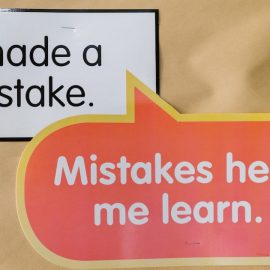
What does the term “knowledge worker” mean? What should the goal of knowledge workers be?
According to Peter Drucker, knowledge workers are employees whose primary contribution comes from subject-matter expertise that isn’t shared by everyone else in an organization. Knowledge workers are now the driving force in most, if not all, businesses and organizations.
Learn how to guide knowledge workers and utilize their talents.
Cultivating Experts
In The Essential Drucker by Peter Drucker, knowledge workers are defined, as well as how organizations facilitate their productivity, the risks involved with mismanaging knowledge workers, and why communication between managers and knowledge workers must flow clearly in both directions.
Drucker writes that by the end of the 20th century, knowledge workers comprised the majority of the US workforce. As a result, it’s now commonly assumed that workers need a college degree to pursue a productive career of any kind. Knowledge workers are experts in their fields in ways that their managers aren’t. Therefore, while managers set overall expectations for knowledge workers’ direction and productivity, there are many situations in which the knowledge worker has higher authority than their boss, such as in the example of the software engineer in the previous section. While managers teach knowledge workers the needs and mission of the organization, knowledge workers teach their bosses the ins and outs of their own expertise.
| White-Collar Work and Managing Upward Drucker’s term “knowledge worker” grew out of the concept of “white-collar workers” who were first recognized as a separate section of the workforce in the 1920s. The distinguishing feature of white-collar work is that it is chiefly intellectual, as opposed to primarily physical “blue-collar jobs” such as retail, manufacturing, and those in other forms of industry. Management itself falls into the category of white-collar knowledge work. While Drucker writes about knowledge workers from a managerial perspective, the authors of First, Break All the Rules devote a chapter to understanding how to deal with managers from the knowledge worker’s point of view. Their tips involve scheduling meetings with your manager to discuss your performance and goals, reframing your role to providing specific outcomes, and setting boundaries with management regarding how much supervision you require and what sort of feedback is appropriate. |
Guiding Knowledge Workers
Most knowledge workers’ expertise is useless without an organization to apply it. After all, how much can an engineer contribute without a business to make use of her talents? It’s management’s job to find the best way to utilize knowledge workers’ skills and then step back to let the experts work. For this reason, it’s vitally important that managers align knowledge workers’ goals with those of the overall organization. Drucker argues that this is especially true in large organizations, where it’s often hard for experts to see the impact of their work on the company’s larger goals. For instance, a software engineer may see creating an app as her purpose, rather than fulfilling the needs of customers for whom the app is ultimately designed.
(Shortform note: In The Unicorn Project, Gene Kim presents a fictional case study of what happens when management fails to link knowledge worker’s output to organizational goals. In Kim’s example, a company’s software engineers work in isolation from each other with no real-time feedback, no visible progress, and no reminders of how what they’re working on will fulfill a larger corporate objective. Kim’s solution is to focus all work on the needs of the customer, which aligns with Drucker’s thesis that a business’s goals are always external, not centered on the organization or the individual worker.)
Drucker says that communication is key to aligning knowledge workers with organizational goals, but it doesn’t work if communication only comes from the top down. Experts must be able to communicate their understanding of their work upward to their managers. When this happens, managers will find that their expectations and goals differ from those of whom they supervise. Drucker suggests that only then can true communication begin, as managers and knowledge workers bring their differing perspectives into alignment. The next step for managers is fostering communication between knowledge workers with different expertise, so they can all understand how they contribute to the objectives of the greater whole.
(Shortform note: As tricky as one-on-one communication can be, fostering open communication across teams can be complicated indeed. In Radical Candor, Kim Scott lays out a seven-step process for building group collaboration out of communication. These include listening to everyone on the team, clarifying the ideas they present, debating the merits of each idea, deciding upon the best course of action, persuading everyone to carry out that decision, executing the appropriate actions, and learning from the process as a whole. While Drucker has much to say on decision-making and implementation, which we’ll cover next, he doesn’t include debate and persuasion as part of his decision-making process.)






